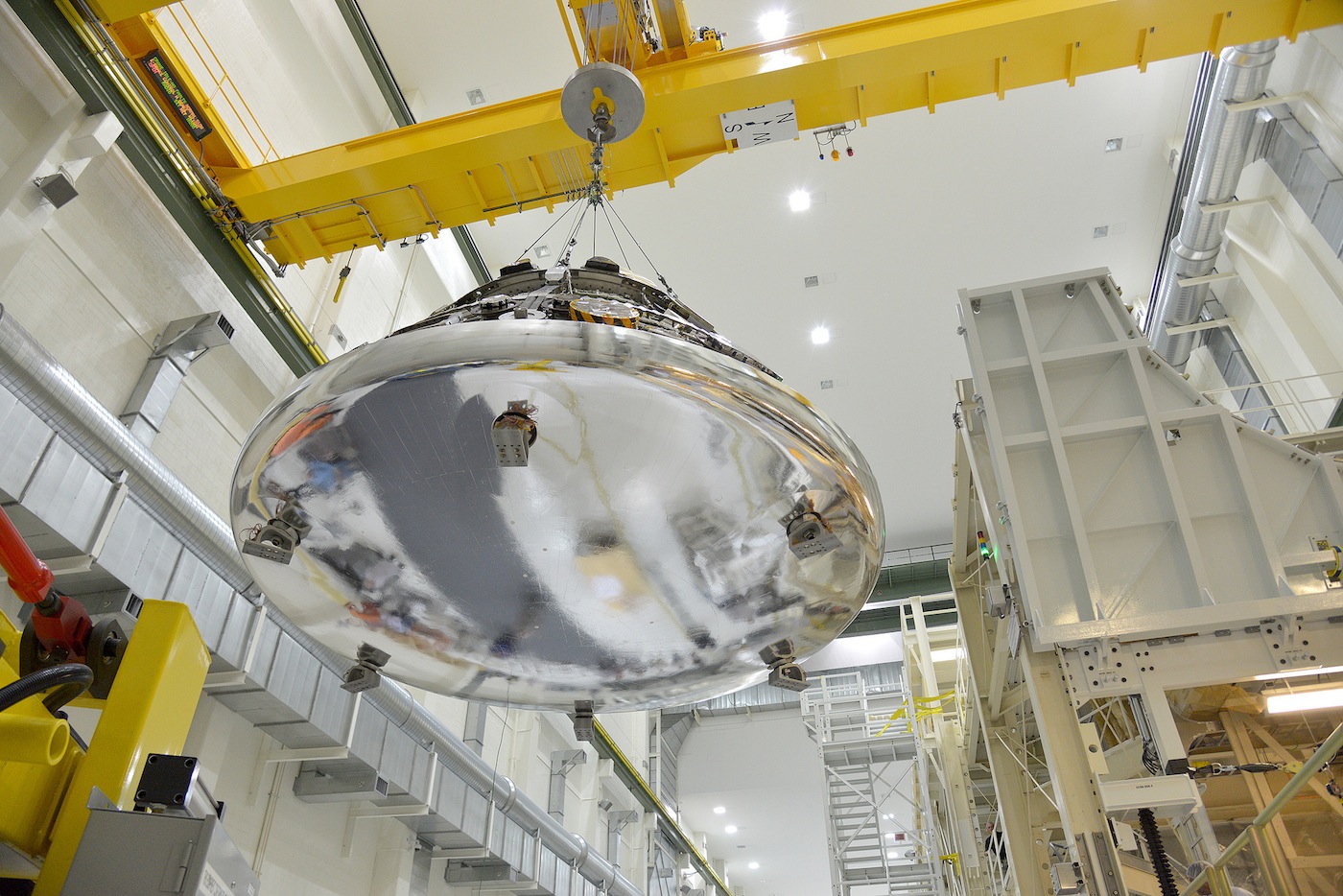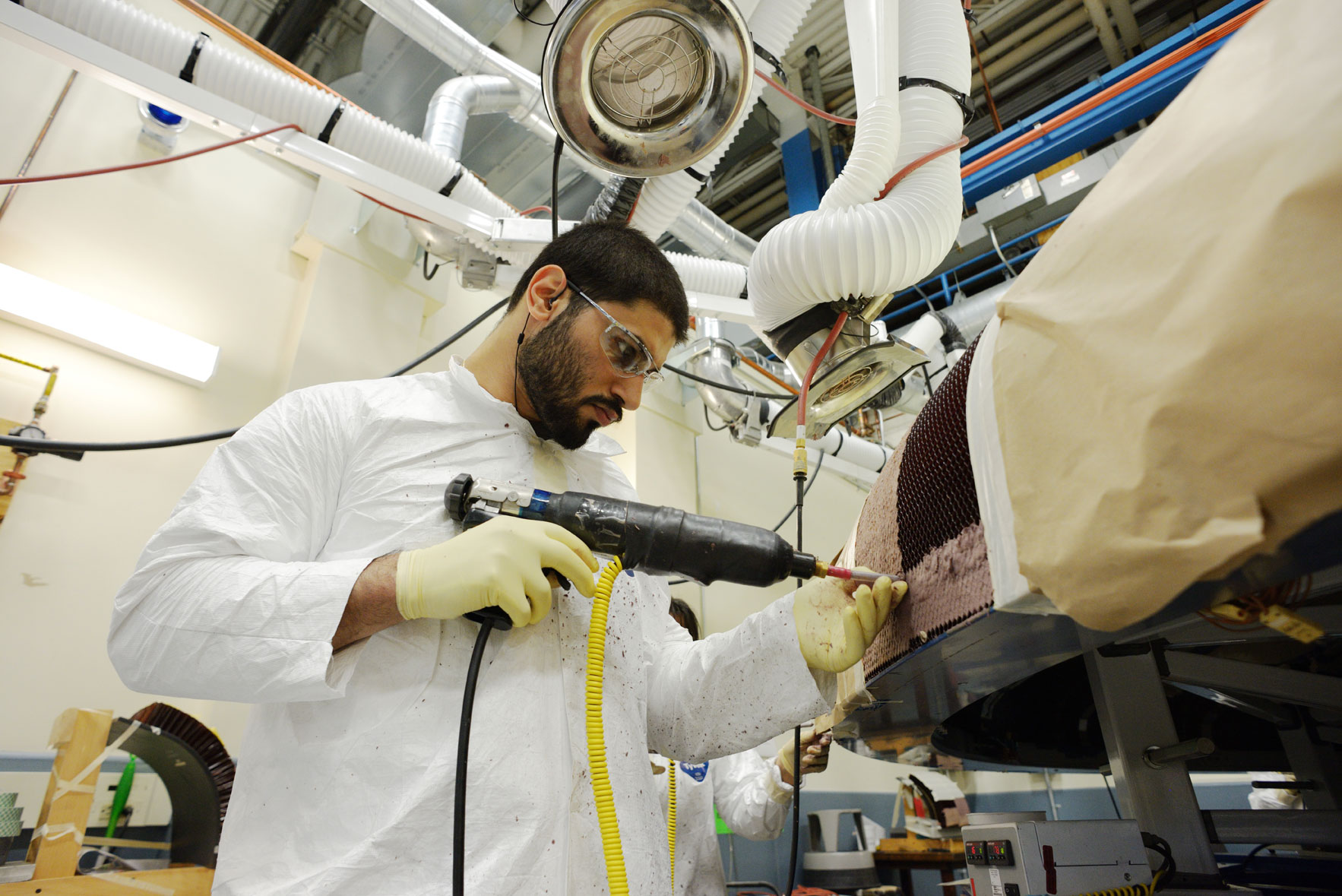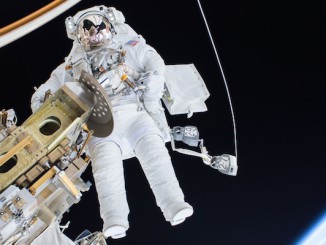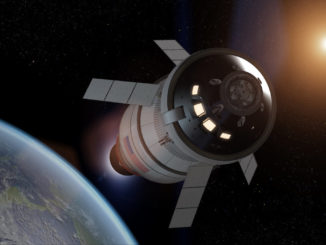
Lessons learned during preparations leading up to the first orbital test flight of NASA’s Orion spacecraft in December have prompted engineers to recommend changing the design of the crew capsule’s heat shield for future missions to the moon, Mars, or an asteroid, according to Lockheed Martin officials.
The change centers on how technicians put together the Orion crew module’s heat shield, which protects the capsule during its descent through the atmosphere. The heat shield can endure temperatures of up to 4,000 degrees Fahrenheit, conditions the Orion capsule would see when returning from deep space missions to the moon, asteroids or Mars.
The heat shield is one of the key components of the crew capsule to be demonstrated on Exploration Flight Test 1, a four-hour orbital mission set for launch Dec. 4 aboard a Delta 4-Heavy rocket.
Engineers are gearing up to move the Orion spacecraft next week from an assembly building at Kennedy Space Center to the Delta 4 launch pad at Cape Canaveral Air Force Station.
The Orion heat shield’s titanium skeleton and carbon fiber skin was fabricated by Lockheed Martin — the craft’s prime contractor — in Colorado. The skeleton was shipped to Textron Defense Systems in Massachusetts for installation of a fiberglass-phenolic honeycomb structure.
More than 330,000 individual cells make up the honeycomb, and Textron technicians — using a special dispensing gun — filled the cells by hand with a material called Avcoat.
The Avcoat insulation is supposed to ablate away during the Orion spacecraft’s re-entry, protecting the underlying structure from searing temperatures. The Apollo moon capsule used the same type of manually-applied material for its heat shield, and it worked so well Lockheed Martin and NASA decided to dust off the design.
Engineers scaled up the heat shield for the Orion crew capsule, which is about four feet wider at its base than the Apollo command module.
“That’s what worked for Apollo, and that’s what we’ll work with for this mission,” Bray said, referring to the EFT-1 launch in December.
But a review of the heat shield on the Orion spacecraft set for launch Dec. 4 revealed the Avcoat was slightly more uneven than expected, according to Jim Bray, crew module director at Lockheed Martin, Orion’s prime contractor.

A statement from a Lockheed Martin spokesperson said the company is recommending changes to the heat shield’s design that allows for different contraction rates between the Avcoat and the composite heat shield substrate.
“This wouldn’t change the heat shield material, but it would change the manufacturing approach, which will resolve thermal contraction/expansion differences,” the statement said.
The spokesperson said a final decision on the recommended design change was expected soon. The heat shield modification will not be implemented on the December flight.
“When we fabricated the entire heat shield, we didn’t get the full-up properties that we expected to get with individual gunner variability,” Bray said in a presentation last month at the International Astronautical Congress in Toronto. “By going to a block architecture, we will be able to get the properties in advance before we adhere it to the substrate of the heat shield.”
For Orion’s next unmanned test flight set for launch in 2017 — known as Exploration Mission 1 — engineers plan to switch from a honeycomb design to a monolithic heat shield, Bray said.
“On the heat shield that we’ve got right now, we have a composite substrate, and we attach a honeycomb structure to that,” Bray said. “It takes us about six months to fill 330,000 holes with individual gunners.”
It turns out the Avcoat applied by hand did not meet expectations, Bray said.
“There was variability between gunners, and we haven’t determined the root cause of that yet,” Bray said. “The heat shield is good for this mission. There’s no question about that. It has credentials to fly, but we really need it to better for the missions farther out for the higher-speed returns, so the question that we had to deal with was how can we prove the material to make sure we know what we’re getting before you finish the heat shield.
“We have decided to move to a block architecture where we can gun the blocks in advance,” Bray said.
After adding the Avcoat ablator, Textron engineers examined each cell under X-ray and a robot sanded off fractions of an inch of the material to meet specifications, according to a NASA website describing the heat shield.
“By going to a block architecture, we will be able to get the properties (of the Avcoat) in advance before we adhere it to the substrate of the heat shield,” Bray said.
Textron will remain Lockheed Martin’s heat shield subcontractor for the Orion program, according to Bray. Data collected on the thermal insulator’s performance on the EFT-1 mission Dec. 4 will still be useful even though future Orion missions will fly with a modified heat shield, he said.
“It’s still Avcoat, so what we will test on the first mission and with the second mission is the difference in the rescission rate,” Bray said. “It’s an ablative material. We expect it to ablate. Whether it ablates the same as a block or a little bit different than the honeycomb — you might expect minor variations, but you wouldn’t expect major variations.”
The sides of the Orion crew module are covered with black tiles borrowed from the space shuttle. They are rated to withstand temperatures greater than 3,000 degrees Fahrenheit, but the Avcoat will take the brunt of the heat during the capsule’s fall back to Earth.
Lockheed Martin proposed the EFT-1 mission to NASA as a risk reduction flight for the agency’s next-generation crew vehicle, which is designed to fly to destinations in deep space.
Piloted missions — and the next unmanned flight in 2017 — will blast off on the Space Launch System, an enormous rocket NASA is developing to launch crews and massive cargo loads farther than low Earth orbit, where space shuttle missions went and the International Space Station flies today.
Orion’s first space mission — riding a Delta 4 rocket’s upper stage — will reach a peak altitude of 3,600 miles and dive back into Earth’s atmosphere at about 20,000 mph, just shy of the speed the capsule would reach when returning from the moon.
Officials bill the mission as an opportunity to test the performance of the heat shield during the high-speed re-entry, which will be faster than space shuttles encountered at the end of their missions.
“We’re interested in seeing the performance of the heat shield,” Bray said. “We have arc jet test facilities where we test the heat shield for the thermal environments, but we can’t do it at the same time as we do thermal and pressure, and it’s really one of the most critical systems that we’ve got.
“It’s about 80 percent the velocity of what we’ll have on the other missions, but we’ll get a pretty good test of its maximum capability with temperature and pressure,” Bray said. “We can’t quite get that using modeling on the ground.”
Computers, guidance systems, software, and the Orion spacecraft’s launcher adapter and separation systems will also be put to the test on the Dec. 4 mission.
“This mission is a compelling mission in that we have 16 events you can’t fully test as an integrated system on the ground,” Bray said. “We’ll use this test flight to verify 10 of those system major events.”
NASA and Lockheed Martin will incorporate results from the EFT-1 mission into a critical design review planned next year, when officials will decide whether the program is ready to proceed into the final stage of development.
“EFT-1’s purpose was to leverage the lessons learned from actually building the spacecraft, and we are implementing that already into the design for the EM-1 spacecraft (set to fly in 2017),” Bray said.
Follow Stephen Clark on Twitter: @StephenClark1.



